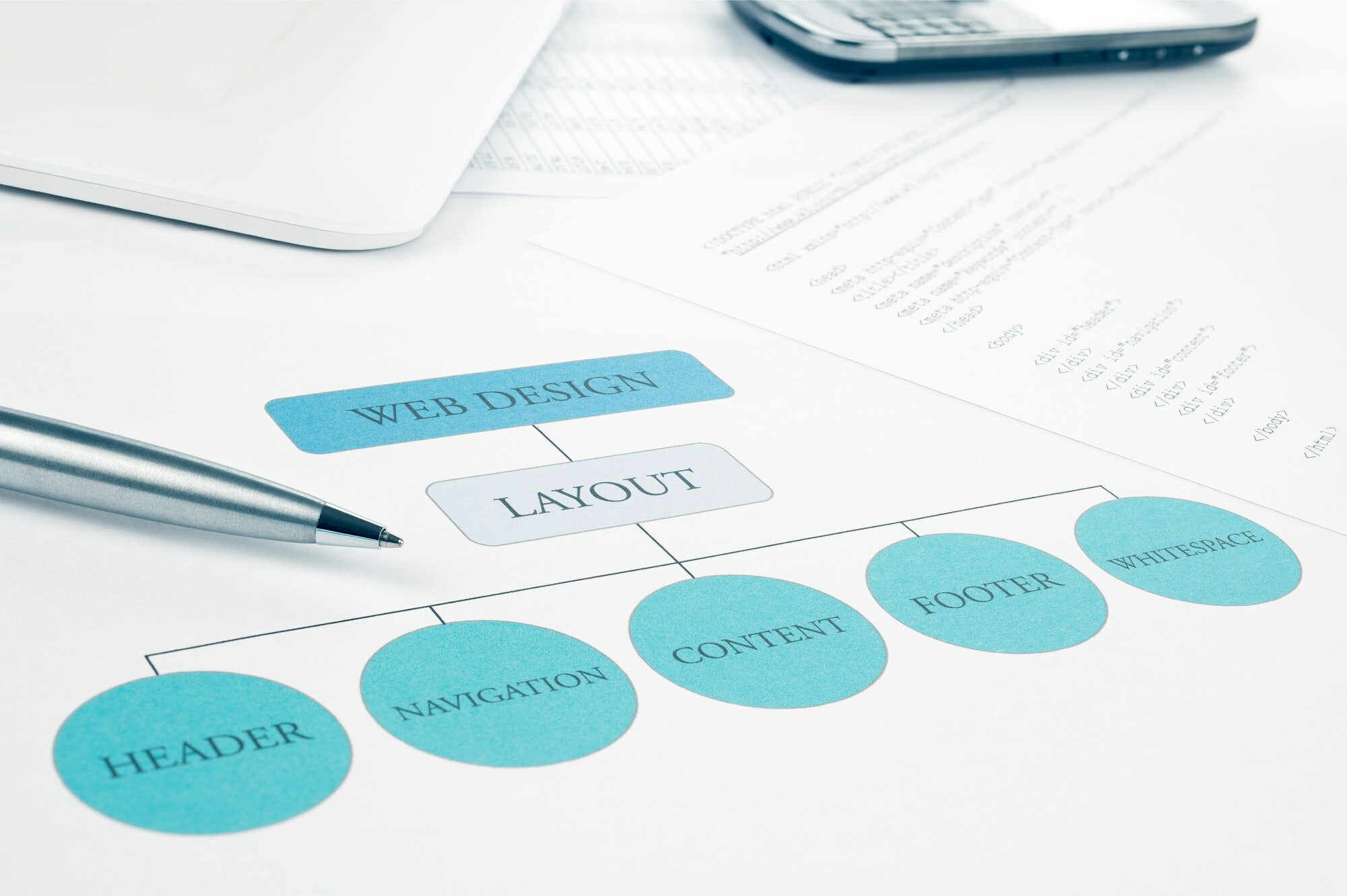Welcome to our blog, where we explore the dynamic intersection between web design and consumer behavior. In an increasingly digitized world, businesses are turning to captivating websites to draw in and retain their target audience. However, beyond aesthetics lies an intricate web of psychological influences that can significantly impact consumer decision-making. In this article, we delve into the various ways in which web design can shape and mold consumer behavior, providing invaluable insights for businesses seeking to optimize their online presence. Join us as we unravel the hidden psychological influences that underlie the impact of web design on consumer behavior.

Table of Contents
Toggle1. The Role of Web Design in Shaping Consumer Behavior: A Psychological Perspective
Web design plays a pivotal role in influencing consumer behavior, leveraging key psychological principles to create a captivating online experience. With the ever-increasing importance of the online marketplace, businesses need to harness the power of well-designed websites to effectively engage and convert users into loyal customers. Web design acts as a silent persuader, subtly guiding users’ thoughts and actions while evoking emotions that drive decision-making.
One crucial aspect of web design is the strategically placed call-to-action (CTA) buttons. By utilizing bright colors, noticeable placement, and persuasive language, CTAs entice users to take desired actions, such as making a purchase or subscribing to a newsletter. These buttons capitalize on psychological triggers, emphasizing the urgency or exclusivity of an offer, resonating with users’ fear of missing out. Web designers should craft CTAs that stand out on the page, making them easily clickable and instantly recognizable to compel users to convert.
- Incorporate visually appealing and intuitive navigation menus to enhance user experience and reduce bounce rates.
- Utilize the principle of social proof by showcasing customer testimonials or positive reviews, instilling confidence in potential buyers.
- Implement responsive design to adapt seamlessly across different devices, ensuring a consistent and satisfactory browsing experience.
By understanding the psychological nuances underlying human behavior, web designers can structure websites that elicit positive emotions, foster trust, and ultimately boost conversions. The power of well-executed web design cannot be understated, as it not only appeals to users visually but also taps into their subconscious needs and desires, leading to a more fruitful online business presence.
2. Unleashing the Power of Web Design: How Visual Elements Influence Consumer Decision Making
In today’s digital world, where website visits are becoming the first point of contact between businesses and consumers, the significance of web design cannot be underestimated. The visual elements on a website play a pivotal role in shaping consumer decision making, making it crucial for businesses to harness them effectively. By seamlessly integrating captivating visuals, businesses can not only enhance user experience but also influence consumer behavior in a profound way.
Visual elements, such as high-quality images and videos, have the power to evoke emotions and create a lasting impression on visitors. It’s no secret that humans are visual creatures – we process visual information much faster than text. When faced with a visually appealing website, consumers are more likely to stay engaged, explore further, and eventually make a purchase or take the desired action. Furthermore, a well-designed website instills trust and credibility in the minds of consumers, ultimately boosting conversions and establishing long-term customer relationships.
- Color Psychology: The strategic use of colors can evoke specific emotions and influence consumer behavior. For instance, using warm hues like red and orange can create a sense of urgency or excitement, while cooler tones like blue and green can promote calmness or trust.
- Typography: The right choice of fonts conveys the personality of a brand and affects readability. Bold and clean typography can add a sense of professionalism, while cursive fonts may be more suitable for creative and artistic businesses.
- Whitespace: Also known as negative space, whitespace is crucial in creating a visually balanced layout and highlighting important content. By providing breathing room, whitespace enhances clarity and draws attention to key elements on a webpage.
By understanding and harnessing the power of web design, businesses can significantly improve their online presence and drive impressive results. From choosing the right color palette to optimizing typography and whitespace, every visual element on a website should work in harmony to captivate visitors and guide them towards conversion. In the ever-evolving digital landscape, unleashing the power of web design has become a necessity for businesses aiming to thrive in the competitive market.
3. Understanding the Subconscious: Web Design’s Influence on Consumer Perception and Efficacy
The subconscious mind plays a significant role in shaping consumers’ perception and efficacy, and in the world of web design, understanding and harnessing its influence is crucial. As users navigate through a website, their subconscious mind is constantly processing visual cues, colors, and layout, which ultimately shapes their perception of a brand or product. It is essential for web designers to utilize this knowledge effectively to create websites that not only capture attention but also evoke the desired emotions and drive action.
One way web design influences consumer perception is through color psychology. Colors have the ability to evoke specific emotions and associations in the subconscious mind. For example, using warm colors like red or orange can create a sense of urgency or excitement, while cool colors such as blue or green can convey calmness and trust. By strategically choosing colors that align with the desired brand image and target audience, web designers can create a visually appealing website that resonates with users on a subconscious level, enhancing their overall perception and engagement.
In addition to colors, web design elements like typography, imagery, and layout also contribute to consumer perception. Consistency in typography across the website establishes a sense of professionalism and reliability. Bold and visually striking imagery can capture users’ attention and leave a lasting impression. Additionally, a well-thought-out layout that guides users seamlessly through the website can reinforce the perceived credibility and usability of a brand or product. By understanding how these web design elements influence the subconscious mind, designers can create websites that optimize consumer perception and efficacy, ultimately driving desired outcomes and conversions.
4. Navigating the Digital Landscape: Key Design Principles to Optimize Consumer Engagement
In today’s fast-paced digital world, it is essential for businesses to understand the key design principles that can optimize consumer engagement. By mastering these principles, companies can create a user experience that not only captures users’ attention but also encourages them to engage and take action. Let’s dive into some of these design principles that will help you navigate the digital landscape successfully.
1. User-Centric Design: Putting your users at the forefront is crucial for optimizing consumer engagement. Consider their needs, preferences, and pain points when designing your website or application. This can be achieved by conducting user research, gathering feedback, and continuously iterating on your design based on their insights.
2. Responsive and Mobile-Friendly Design: With an increasing number of users accessing the internet through mobile devices, it is vital to ensure that your website or application is responsive and mobile-friendly. This means that it should adapt seamlessly to different screen sizes and resolutions, providing a smooth and intuitive experience across all devices.
3. Clear and Intuitive Navigation: Users should be able to effortlessly move through your website or application without confusion. Implement a clear and intuitive navigation structure, such as a well-organized menu, breadcrumbs, or search functionality, ensuring that users can find what they are looking for quickly and easily.
4. Consistent Branding: Consistency in branding is key to establishing trust and familiarity with your users. Ensure that your brand elements, such as colors, typography, and imagery, are consistently used throughout your digital presence. This creates a cohesive and recognizable experience for your audience.
5. Engaging Visuals and Interactive Elements: Humans are naturally drawn to visually appealing content. Incorporate engaging visuals, such as high-quality images, videos, and infographics, to capture users’ attention and convey your message effectively. Additionally, consider adding interactive elements like sliders, forms, or quizzes to keep users engaged and encourage participation.
By paying attention to these key design principles, you can optimize consumer engagement in the digital landscape. Remember, design is not just about aesthetics but also about creating meaningful and delightful experiences for your users. Stay tuned for more insights and tips on how to navigate the ever-evolving world of design for consumer engagement!
5. Harnessing User Experience: Enhancing Consumer Trust and Conversion through Web Design
In today’s highly competitive online marketplace, businesses must go the extra mile to build trust with consumers and drive conversions. One highly effective way to achieve these goals is through strategic web design. By harnessing user experience (UX), businesses can create websites that not only captivate and engage users but also foster a sense of trust and reliability.
To enhance consumer trust and conversion rates, it is crucial to prioritize user-centric design principles. This includes creating intuitive and easily navigable interfaces that allow users to seamlessly find the information they seek. Incorporating clear and concise calls-to-action (CTAs) throughout the website can guide users towards desired actions, such as making a purchase or signing up for a newsletter. Furthermore, incorporating visual elements, such as images and videos, can help convey authenticity and create a more immersive browsing experience. By optimizing the website for different devices and ensuring fast loading times, businesses can further enhance user satisfaction and build trust. Additionally, creating an accessible website that adheres to web accessibility standards enables all users to easily access and interact with the content, thereby broadening the user base and enhancing consumer trust.
Investing in a user-focused web design strategy is a powerful tool for businesses striving to establish and nurture long-term consumer trust. By implementing intuitive navigation, compelling CTAs, authentic visuals, and accessibility features, businesses can greatly enhance the overall user experience and increase conversion rates. With a well-designed website that aligns with user expectations, businesses can take a significant step towards gaining a competitive edge and fostering lasting customer relationships.
Q&A
Q: What is the impact of web design on consumer behavior?
A: Web design plays a significant role in influencing consumer behavior. It can affect users’ perception of a brand, their purchasing decisions, and overall website engagement.
Q: How does web design impact users’ perception of a brand?
A: A well-designed website builds trust and credibility. Users are more likely to perceive a brand as reliable, professional, and trustworthy if its website has an aesthetically pleasing design, is easy to navigate, and provides a positive user experience.
Q: Can web design influence users’ purchasing decisions?
A: Absolutely! Strategic web design elements, such as appealing visuals, clear product descriptions, easy-to-use shopping carts, and persuasive calls-to-action, can influence users to make a purchase. An effective web design can create a seamless shopping experience and even trigger an emotional response that enhances the likelihood of conversion.
Q: What psychological influences are at play in web design’s impact on consumer behavior?
A: Several psychological factors influence consumer behavior online. These include visual appeal, ease of use, cognitive load, trustworthiness, social proof, and the scarcity principle. These influences can shape users’ perceptions, emotions, and decision-making processes as they navigate a website.
Q: How does a visually appealing web design impact consumer behavior?
A: Visual appeal is crucial in capturing users’ attention and interest. A visually pleasing website design enhances user engagement, encourages exploration, and extends their visit duration. It can also leave a lasting positive impression, increasing the likelihood of a repeat visit or purchase.
Q: What role does ease of use play in web design and consumer behavior?
A: Easy-to-use websites contribute to positive user experiences, which ultimately influence consumer behavior. Intuitive navigation, clear information hierarchy, and a user-friendly interface allow users to find what they need quickly, facilitating smoother interactions and boosting the chances of conversion.
Q: How does web design influence cognitive load and consumer behavior?
A: Web design affects cognitive load by presenting information in a digestible manner. By utilizing proper typography, layout, and visual organization, a website can reduce cognitive load, enhancing users’ ability to process information and make decisions. This can ultimately lead to better user experiences and increased conversion rates.
Q: Can web design impact a user’s trust in a brand?
A: Yes, web design significantly affects users’ trust in a brand. Elements such as a professional appearance, clear contact information, security seals, customer testimonials, and transparent policies all contribute to building trust. A trustworthy design establishes credibility, putting users at ease and making them more likely to engage and convert.
Q: How does social proof influence consumer behavior through web design?
A: Social proof, such as customer reviews, ratings, and testimonials, can significantly impact consumer behavior. Integrating social proof elements into web design, such as prominently featuring positive reviews, can positively influence users’ perception of a brand’s credibility and reputation, encouraging them to make a purchase.
Q: What role does the scarcity principle play in web design’s impact on consumer behavior?
A: The scarcity principle leverages the fear of missing out to influence consumer behavior. By using techniques like limited-time offers or highlighting low stock availability, web design can create a sense of urgency, motivating users to make a purchase sooner rather than later.
Q: In conclusion, how important is web design in influencing consumer behavior?
A: Web design holds immense importance in influencing consumer behavior. It can shape users’ perceptions, evoke emotional responses, enhance trust, and influence purchasing decisions. A well-designed website can maximize user engagement and conversion rates, ultimately contributing to a brand’s success in the competitive online marketplace. In conclusion, the impact of web design on consumer behavior is undoubtedly a crucial aspect of modern business. As we have delved into the psychological influences at play, it has become clear that web design goes far beyond mere aesthetics. It has the power to shape perceptions, emotions, and ultimately, purchasing decisions.
By understanding the psychology behind consumer behavior, businesses can leverage web design to create a compelling online experience that captivates and engages their target audience. From the strategic use of color and typography to the placement of interactive elements and intuitive navigation, every design element plays a vital role in shaping consumer perceptions and driving desired actions.
However, it is important to remember that effective web design does not rest solely on understanding psychological principles. It also requires a deep understanding of your target audience, their needs, and their preferences. A well-designed website should cater to the unique characteristics of your target market, creating a seamless and personalized user experience that entices them to explore further, stay longer, and ultimately convert into loyal customers.
In this digital age where competition is fierce, businesses cannot afford to overlook the impact of web design on consumer behavior. By investing in professional web design that aligns with psychological influences, businesses can gain a competitive edge, build brand loyalty, and drive their bottom line. Whether you are a small startup or an established industry leader, optimizing your web design for consumer behavior is no longer a luxury, but a necessity to thrive in the ever-evolving online marketplace.
So, let us embrace the power of web design, harness the psychological influences that shape consumer perceptions, and create captivating online experiences that leave a lasting impression. By doing so, we can not only unravel the mysteries behind consumer behavior but also unlock a world of possibilities for our businesses.




